Swimming pools are the quintessential oasis of summer, providing a refreshing escape from the heat and a focal point for family and social gatherings. But behind the scenes, a crucial chemical plays a major role in keeping that sparkling water safe and inviting: chlorine. One question that plagues many pool owners is the frequency at which they should be adding this vital pool sanitiser. In this comprehensive guide, we are going to demystify the presence of chlorine in your pool and offer clear strategies for managing it effectively.
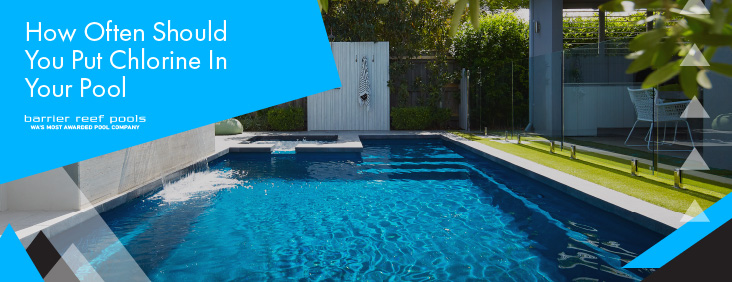
Understanding the Role of Chlorine in Pool Maintenance
Before we can address the frequency of adding chlorine to your pool, it’s important to understand why you’re doing it in the first place. Chlorine is the workhorse of pool sanitation, fighting off bacteria and other harmful contaminants that can quickly turn a clear pool into a breeding ground for illness.
How Chlorine Works
Chlorine operates by breaking the chemical bonds that hold many unwanted compounds together. It’s particularly efficient at eliminating bacteria and organic matter. When dissolved in water, chlorine forms hypochlorous acid, an incredibly powerful sanitizer that works relentlessly to keep your swimming experience safe.
Types of Chlorine
When it comes to chlorine, variety abounds. From traditional granules and tablets to fast-dissolving shock treatments, each type has its benefits. The choice often boils down to your pool’s specific needs, your maintenance routine, and personal preference. Ideally, you should be familiar with:
- Stabilised Chlorine: Designed to maintain its effectiveness in the presence of sunlight and can be used as regular maintenance or shock treatments.
- Unstabilised Chlorine: Although this type is less affected by sunlight, it also dissipates faster, making it a good shock treatment or for indoor pools.
- Liquid Chlorine: A powerful option that suits larger pools or a rapid response to contamination, it’s effective but a little less convenient to handle and store.
- Chlorine Generators: These innovative devices produce chlorine from common salt, offering a more sustainable and self-regulated chlorine approach.
Factors Affecting Chlorine Consumption
The amount of chlorine your pool needs can fluctuate due to several factors. Being aware of these variables can save you from both under-chlorination issues, such as the spread of illness, and over-chlorination, which leads to wastage and can be harmful to swimmers.
Environmental Conditions
Temperature and sunlight play a significant role in chlorine consumption. Warmer water increases the activity of both swimmers and microbes, meaning you’ll need to boost your chlorine levels. Ultraviolet (UV) rays can rapidly degrade chlorinated compounds, so pools exposed to strong sunlight may need replenishing more often.
Frequency of Pool Use
Each splash and swim introduces contaminants that chlorine must battle. A pool that sees a lot of activity, whether through regular use or social gatherings, will require more diligent chlorination than one that is only used occasionally.
pH Levels
Chlorine effectiveness is also influenced by the pool’s pH. High pH levels can lead to a condition known as chlorine lock, where chlorine is prevented from doing its sanitising work. Conversely, low pH levels cause chlorine to be consumed more rapidly, which might lead you to believe you need more, when in fact, you just need to balance your water chemistry.
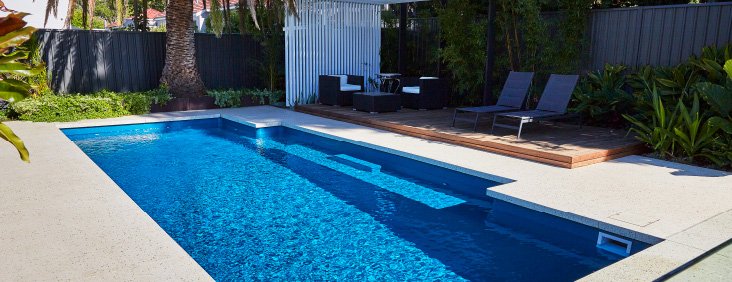
Determining the Right Chlorine Schedule
Now that you’re familiar with what affects chlorine levels, it’s time to establish a solid plan.
Daily Dosage
To keep chlorine levels stable, a daily dose is often the most practical approach. It’s like brushing your teeth; a small simple routine to keep larger issues at bay. This can be as straightforward as floating a chlorine tablet in the pool or adding a capful of liquid chlorine, particularly in the evening when the sun isn’t actively degrading the sanitiser.
Weekly Maintenance
In addition to your daily duties, weekly shocks are necessary to combat the unseen, ongoing build-up of organic matter. This ensures that your pool maintains a consistent level of cleanliness. The amount of shock needed will vary, but it can be easily calculated based on pool size and usage.
Monthly Adjustments
Every month, you should recalibrate your schedule. Test kits are essential for this. Monthly tests will tell you if you’re overdoing it (and wasting chlorine) or, worse, underdoing it. Adjustments might be necessary as seasons change, affecting conditions such as sunlight exposure and water temperature.
Signs of Inadequate or Excessive Chlorine
Recognizing when your pool either needs more chlorine or needs to ease up on its intake is a critical skill.
Visual and Sensory Clues
Water clarity is a key indicator. Cloudiness or any visible algae are a sign that chlorine levels aren’t up to snuff. On the flip side, excessively strong chlorine smells or eye irritation point to levels that are too high and might pose a health hazard.
Testing and Monitoring Tools
Utilise pool test strips or a more comprehensive test kit. Keeping an eye on your pool water’s pH, alkalinity, and chlorine levels will provide a clear understanding of how well your treatment plan is working. If you’re seeing patterns of consistent imbalance, you may need to adjust your approach.
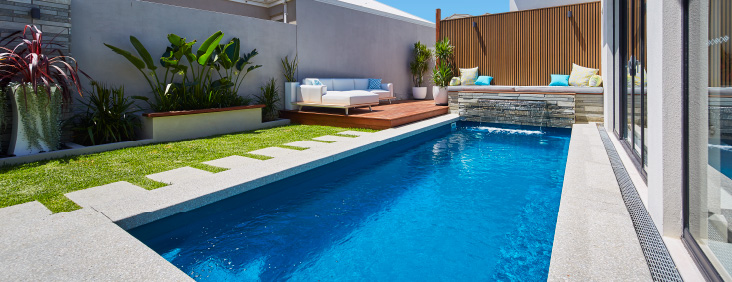
Tips for Effective Chlorine Management
The path to an efficiently chlorinated pool is laden with subtleties. Here are some pro tips to stay on track with your chlorine maintenance.
Understanding Test Results
Familiarise yourself with the numbers and readings you get from your test kit. Don’t just look for red flags; understand the levels your water should ideally maintain and become adept at interpreting any shifts.
Preventing Chlorine Loss
Maintaining pool covers for external pools, reducing exposure to the sun, and encouraging stringent shower before swimming habits can all curtail unnecessary chlorine loss.
Consistency Is Key
Developing a habitual maintenance routine breeds consistency. Whether it’s checking the filter, testing water weekly, or balancing pH, each step supports sustained, effective chlorine activity.
Conclusion
The importance of chlorine in your pool maintenance cannot be overstated. It’s the guardian that allows you and your loved ones to swim confidently and safely. By understanding how chlorine works, what impacts its effectiveness, and how to create a maintenance schedule that meets your pool’s unique needs, you’re well on your way to a summer filled with worry-free swims.
Should you encounter challenges beyond your pool maintenance prowess, don’t hesitate to call in professional assistance. Pool technicians can provide tailored guidance, as well as time-saving services that ensure your pool remains a glistening bastion of hygiene all year round. After all, when it comes to pooling, a little extra knowledge and care goes a long way.
Swimming pools are the quintessential oasis of summer, providing a refreshing escape from the heat and a focal point for family and social gatherings. But behind the scenes, a crucial chemical plays a major role in keeping that sparkling water safe and inviting: chlorine. One question that plagues many pool owners is the frequency at which they should be adding this vital pool sanitiser. In this comprehensive guide, we are going to demystify the presence of chlorine in your pool and offer clear strategies for managing it effectively.
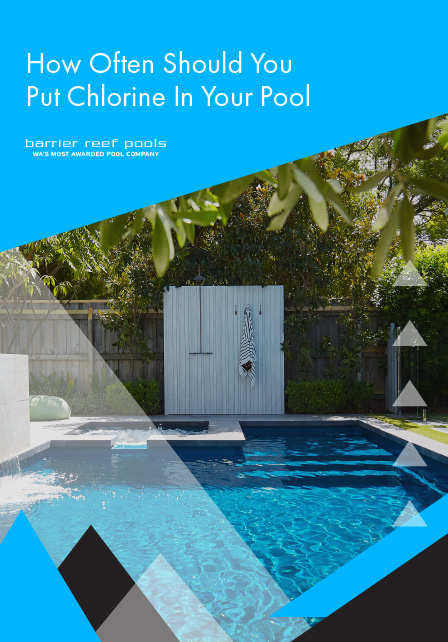
Understanding the Role of Chlorine in Pool Maintenance
Before we can address the frequency of adding chlorine to your pool, it’s important to understand why you’re doing it in the first place. Chlorine is the workhorse of pool sanitation, fighting off bacteria and other harmful contaminants that can quickly turn a clear pool into a breeding ground for illness.
How Chlorine Works
Chlorine operates by breaking the chemical bonds that hold many unwanted compounds together. It’s particularly efficient at eliminating bacteria and organic matter. When dissolved in water, chlorine forms hypochlorous acid, an incredibly powerful sanitizer that works relentlessly to keep your swimming experience safe.
Types of Chlorine
When it comes to chlorine, variety abounds. From traditional granules and tablets to fast-dissolving shock treatments, each type has its benefits. The choice often boils down to your pool’s specific needs, your maintenance routine, and personal preference. Ideally, you should be familiar with:
- Stabilised Chlorine: Designed to maintain its effectiveness in the presence of sunlight and can be used as regular maintenance or shock treatments.
- Unstabilised Chlorine: Although this type is less affected by sunlight, it also dissipates faster, making it a good shock treatment or for indoor pools.
- Liquid Chlorine: A powerful option that suits larger pools or a rapid response to contamination, it’s effective but a little less convenient to handle and store.
- Chlorine Generators: These innovative devices produce chlorine from common salt, offering a more sustainable and self-regulated chlorine approach.
Factors Affecting Chlorine Consumption
The amount of chlorine your pool needs can fluctuate due to several factors. Being aware of these variables can save you from both under-chlorination issues, such as the spread of illness, and over-chlorination, which leads to wastage and can be harmful to swimmers.
Environmental Conditions
Temperature and sunlight play a significant role in chlorine consumption. Warmer water increases the activity of both swimmers and microbes, meaning you’ll need to boost your chlorine levels. Ultraviolet (UV) rays can rapidly degrade chlorinated compounds, so pools exposed to strong sunlight may need replenishing more often.
Frequency of Pool Use
Each splash and swim introduces contaminants that chlorine must battle. A pool that sees a lot of activity, whether through regular use or social gatherings, will require more diligent chlorination than one that is only used occasionally.
pH Levels
Chlorine effectiveness is also influenced by the pool’s pH. High pH levels can lead to a condition known as chlorine lock, where chlorine is prevented from doing its sanitising work. Conversely, low pH levels cause chlorine to be consumed more rapidly, which might lead you to believe you need more, when in fact, you just need to balance your water chemistry.
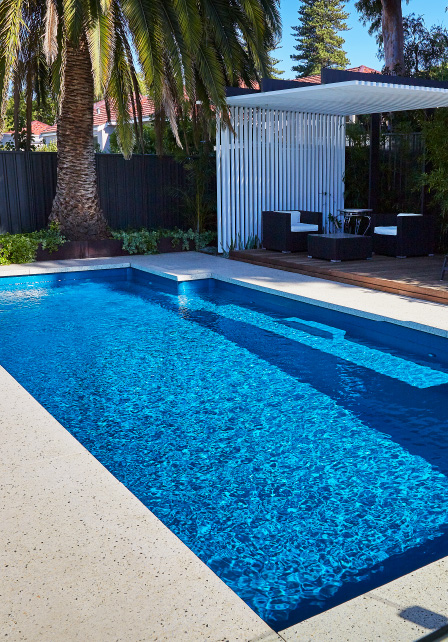
Determining the Right Chlorine Schedule
Now that you’re familiar with what affects chlorine levels, it’s time to establish a solid plan.
Daily Dosage
To keep chlorine levels stable, a daily dose is often the most practical approach. It’s like brushing your teeth; a small simple routine to keep larger issues at bay. This can be as straightforward as floating a chlorine tablet in the pool or adding a capful of liquid chlorine, particularly in the evening when the sun isn’t actively degrading the sanitiser.
Weekly Maintenance
In addition to your daily duties, weekly shocks are necessary to combat the unseen, ongoing build-up of organic matter. This ensures that your pool maintains a consistent level of cleanliness. The amount of shock needed will vary, but it can be easily calculated based on pool size and usage.
Monthly Adjustments
Every month, you should recalibrate your schedule. Test kits are essential for this. Monthly tests will tell you if you’re overdoing it (and wasting chlorine) or, worse, underdoing it. Adjustments might be necessary as seasons change, affecting conditions such as sunlight exposure and water temperature.
Signs of Inadequate or Excessive Chlorine
Recognizing when your pool either needs more chlorine or needs to ease up on its intake is a critical skill.
Visual and Sensory Clues
Water clarity is a key indicator. Cloudiness or any visible algae are a sign that chlorine levels aren’t up to snuff. On the flip side, excessively strong chlorine smells or eye irritation point to levels that are too high and might pose a health hazard.
Testing and Monitoring Tools
Utilise pool test strips or a more comprehensive test kit. Keeping an eye on your pool water’s pH, alkalinity, and chlorine levels will provide a clear understanding of how well your treatment plan is working. If you’re seeing patterns of consistent imbalance, you may need to adjust your approach.
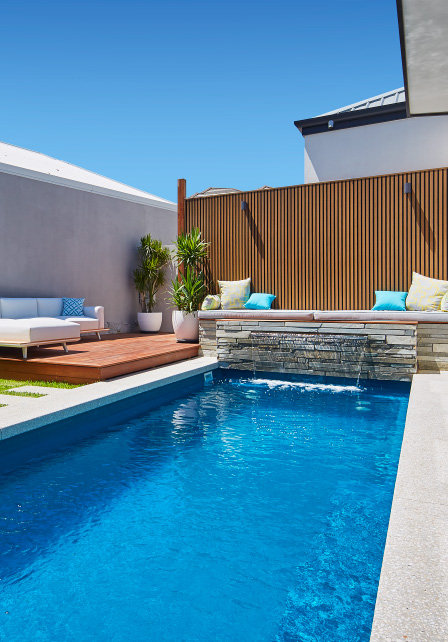
Tips for Effective Chlorine Management
The path to an efficiently chlorinated pool is laden with subtleties. Here are some pro tips to stay on track with your chlorine maintenance.
Understanding Test Results
Familiarise yourself with the numbers and readings you get from your test kit. Don’t just look for red flags; understand the levels your water should ideally maintain and become adept at interpreting any shifts.
Preventing Chlorine Loss
Maintaining pool covers for external pools, reducing exposure to the sun, and encouraging stringent shower before swimming habits can all curtail unnecessary chlorine loss.
Consistency Is Key
Developing a habitual maintenance routine breeds consistency. Whether it’s checking the filter, testing water weekly, or balancing pH, each step supports sustained, effective chlorine activity.
Conclusion
The importance of chlorine in your pool maintenance cannot be overstated. It’s the guardian that allows you and your loved ones to swim confidently and safely. By understanding how chlorine works, what impacts its effectiveness, and how to create a maintenance schedule that meets your pool’s unique needs, you’re well on your way to a summer filled with worry-free swims.
Should you encounter challenges beyond your pool maintenance prowess, don’t hesitate to call in professional assistance. Pool technicians can provide tailored guidance, as well as time-saving services that ensure your pool remains a glistening bastion of hygiene all year round. After all, when it comes to pooling, a little extra knowledge and care goes a long way.




